History (1817–1819)
Dartmouth University operated in Hanover, New Hampshire, on the campus of Dartmouth College. The University was established by the New Hampshire Legislature in an act of June 27, 1816. The College Trustees had dismissed President John Wheelock, and his allies in Concord sought to reinstate him through legislation. The act ostensibly modified the existing Charter rather than establishing a new institution: it attempted to change the name to Dartmouth University, to increase the number of Trustees from twelve to twenty-one, and to create a board of twenty-five Overseers including, ex officio, the Governor and Council, the President of the Senate, the Speaker of the House, and the Governor and Lieutenant-Governor of Vermont.
The Legislature had some reason to see the existing school as a state charity. Dartmouth used the terms "college" and "university" almost interchangeably in its early years. It accepted state grants of land and money, including the Second College Grant and state funding for the construction of its medical school in 1811. It included in its first board of Trustees the Governor, the President of Governor's Council, two Council members, the Speaker of the New Hampshire House, and an Assistant of the Colony of Connecticut.
Many of Dartmouth's existing Trustees refused to obey the Legislature's act, however, and the Trustees of Dartmouth University failed to obtain a quorum to conduct any business. In response, the Legislature voted on December 18, 1816, that the Governor had the power to fill the vacancies left by the Trustees who would not submit (eight known as "the Octagon") and decided to reduce the number required for a quorum. The University Trustees met and brought the University into being during 1817. John Wheelock was named President, but upon his death in 1817 was replaced by his son-in-law, William Allen.
Dartmouth University as the Legislature saw it would offer a broad professional program, including separate schools of law and medicine. The existing Medical School continued to operate, but the rest of the University remained small: professors taught classes to a small number of undergraduates in Dartmouth Hall. The University took possession of the College Charter and its Seal, hiding them in a nearby farmhouse. A small group of University professors and allied townspeople attempted to take the private libraries of the College's two literary societies, the Social Friends and the United Fraternity, which were located in Dartmouth Hall. Students living in the building heard the sound of an axe breaking down the door of the U.F. library at night and sounded the alarm. A group of students wielding sticks of firewood soon forced the professors out, and the societies removed their libraries to keep them from falling into the hands of the University.
The College, meanwhile, rented rooms in a building north of Dartmouth Hall and filed a suit in the county court to regain its property. Though lacking its former buildings, the College retained most of its students and had a much larger enrollment than the University. Students of the two institutions would pass each other on the Green between classes, and the two schools competed to reserve the College Church for Commencements on the same day. Both schools graduated students in 1817 and 1818.
Though the College effectively was fighting for its life against the legislature, its cause of action ostensibly sought the return of the Charter and the Seal from the University Treasurer, William H. Woodward. The school lost and appealed the case directly to the state's supreme court, where it lost again and appealed to the U.S. Supreme Court. Daniel Webster argued the side of the College in the Dartmouth College Case, describing the Charter this way: "A charter of more liberal sentiments, of wiser provisions, drawn with more care, or in a better spirit, could not be expected at any time or from any other source."
The Court decided the case near the end of 1818 and released Chief Justice John Marshall's opinion in February 1819. The decision declared the Legislature's acts unconstitutional as interferences with the obligations of a contract, whether that contract was seen as the one that existed between College founder Eleazar Wheelock and the Crown, the one between the school's various benefactors and the Crown, or between some other combination of parties. When the news reached Hanover several days later, the College and University were between terms, with few students in town. Many townspeople who supported the College celebrated, however, cheering loudly in the streets and firing a cannon. That spring, Dartmouth College reoccupied its buildings.
The New Hampshire Legislature would not attempt to establish another university until the 1860s, when it created the land-grant forerunner of the University of New Hampshire, originally called the New Hampshire College of Agriculture and the Mechanic Arts – in Hanover, associated with Dartmouth College.
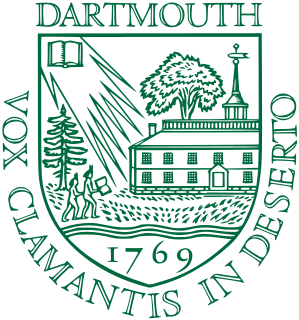
Dartmouth College is a private Ivy League research university in Hanover, New Hampshire, United States. Established in 1769 by Eleazar Wheelock, it is the ninth-oldest institution of higher education in the United States and one of the nine colonial colleges chartered before the American Revolution. Although initially founded as a school to educate young Native Americans in Christian theology and liberal arts, Dartmouth primarily trained Congregationalist ministers throughout its early history before it gradually secularized, emerging at the turn of the 20th century from relative obscurity into national prominence.
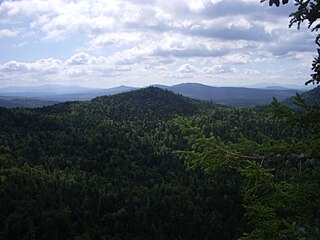
Second College Grant is a township located in Coös County, New Hampshire, United States. The area of this township is owned and controlled by Dartmouth College. As of the 2010 census, the grant had a total population of zero.
Trustees of Dartmouth College v. Woodward, 17 U.S. 518 (1819), was a landmark decision in United States corporate law from the United States Supreme Court dealing with the application of the Contracts Clause of the United States Constitution to private corporations. The case arose when the president of Dartmouth College was deposed by its trustees, leading to the New Hampshire legislature attempting to force the college to become a public institution and thereby place the ability to appoint trustees in the hands of the governor of New Hampshire. The Supreme Court upheld the sanctity of the original charter of the college, which pre-dated the creation of the State.

John Taylor Gilman was a farmer, shipbuilder and statesman from Exeter, New Hampshire. He represented New Hampshire in the Continental Congress in 1782–1783 and was Governor of New Hampshire for 14 years, from 1794 to 1805, and from 1813 to 1816.
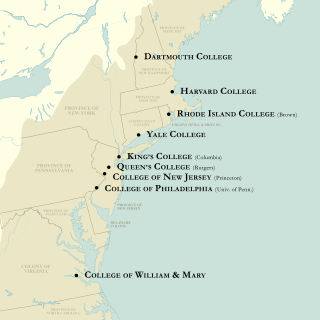
The colonial colleges are nine institutions of higher education chartered in the Thirteen Colonies before the United States of America became a sovereign nation after the American Revolution. These nine have long been considered together, notably since the survey of their origins in the 1907 The Cambridge History of English and American Literature. Seven of the nine colonial colleges became seven of the eight Ivy League universities: Harvard, Columbia, Princeton, Yale, University of Pennsylvania, Dartmouth, and Brown..
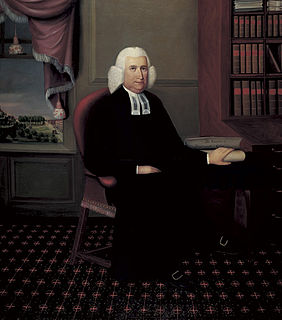
Eleazar Wheelock was an American Congregational minister, orator, and educator in Lebanon, Connecticut, for 35 years before founding Dartmouth College in New Hampshire. He had tutored Samson Occom, a Mohegan who became a Presbyterian minister and the first Native American to publish writings in English. Before founding Dartmouth, Wheelock founded and ran the Moor's Charity School in Connecticut to educate Native Americans. The college was primarily for the sons of American colonists.

Kappa Kappa Kappa (ΚΚΚ), known informally as Tri-Kap, is a local men's fraternity at Dartmouth College in Hanover, New Hampshire. The fraternity was founded in 1842 and is the second-oldest fraternity at Dartmouth College. Tri-Kap is the oldest local fraternity in the United States. It is located at 1 Webster Avenue, Hanover, New Hampshire.

John Wheelock was the eldest son of Eleazar Wheelock who was the founder and first president of Dartmouth College; John Wheelock succeeded his father as the College’s second president.

The Rev. Asa Dodge Smith D.D., L.L.D. served as the 7th president of Dartmouth College from 1863 until his death in 1877.

New Hampshire College of Agriculture and the Mechanic Arts (NHC) was founded and incorporated in 1866, as a land grant college in Hanover in connection with Dartmouth College. In 1893, NHC moved to Durham, where it became the University of New Hampshire (UNH) in 1923, by an act of the New Hampshire General Court.

John Phillips (December 27, 1719 – April 21, 1795) was an early American educator and the cofounder of Phillips Exeter Academy in New Hampshire, along with his wife, Elizabeth Phillips. He was a major donor to Dartmouth College, where he served as a trustee. He also made significant donations to Harvard College and Princeton University.
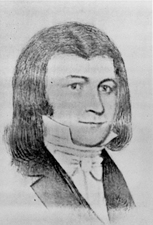
Judah Dana was an American lawyer, judge and politician. He served as a United States Senator from Maine and as Judge of the Maine Court of Common Pleas during the early 1800s.

The Rev. Francis Brown served as the president of Dartmouth College. He graduated from the college in 1805 and from 1806–1809 held a tutorship there. He also served as a pastor of the First Parish Congregational Church in Yarmouth, Maine. Brown was removed from his presidency at the college as part of the actions that resulted in the Dartmouth College case, but was reinstated following the 1819 decision in favor of the college.

Thomas Weston Thompson was an American attorney and Federalist politician in the U.S. state of New Hampshire. He served as a United States Representative and United States Senator during the 1800s.

Abijah Bigelow was a U.S. Representative from Massachusetts.

The Board of Trustees of Dartmouth College is the governing body of Dartmouth College, an Ivy League university located in Hanover, New Hampshire, United States. As of September 5, 2008, the Board includes twenty-three people. The current Chair of the Board is Stephen Mandel Jr..

The Seal of Dartmouth College is the official insignia of Dartmouth College, an Ivy League university located in Hanover, New Hampshire, United States. Anglo-American law generally requires a corporate body to seek official government sanction, usually in the form of a charter, in order to operate. Such chartered bodies normally authenticate their official acts by marking them with a distinctive seal. The seal's design is usually complicated to avoid counterfeiting, but it can also express something about the institution's history or mission. Dartmouth College is one such chartered body, and it obtained its official seal in 1773.

The Green is a grass-covered field and common space at the center of Dartmouth College, an Ivy League university located in Hanover, New Hampshire, United States. It was among the first parcels of land obtained by the College upon its founding in 1769, and is the only creation of the 18th century remaining at the center of the campus. After being cleared of pine trees, it initially served as a pasture and later as an athletic field for College sporting events. Today, it is a central location for rallies, celebrations, and demonstrations, and serves as a general, all-purpose recreation area. The College describes the Green as "historic" and as the "emotional center" of the institution.

Elisha Payne was a prominent businessman and political figure in the states of New Hampshire and Vermont following the events of the American Revolution. He is best known for serving as Lieutenant Governor of the Vermont Republic and Chief Justice of the Supreme Court of Vermont.


















